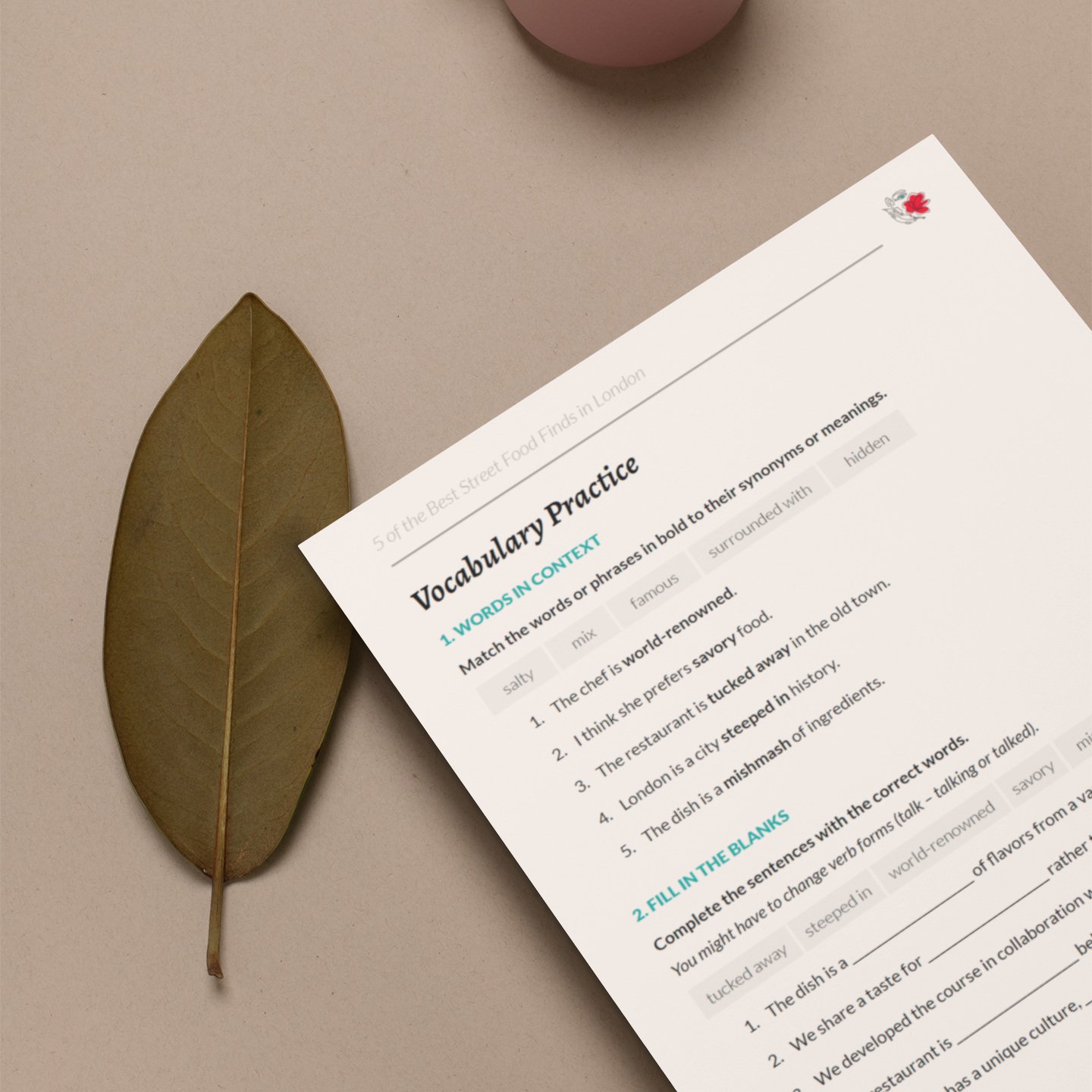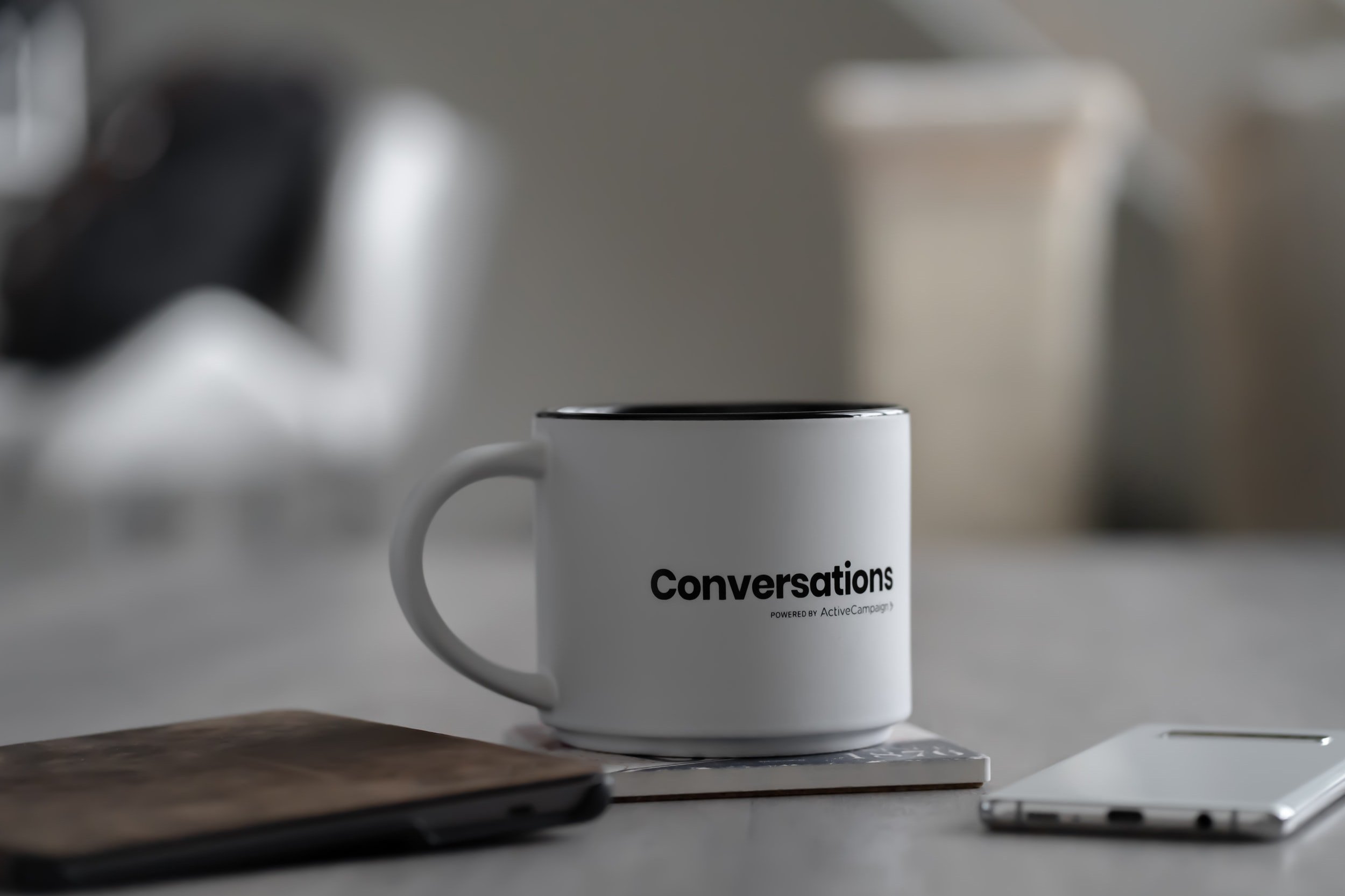What’s the Best Way to Improve My Listening in English?
If you feel confident about your reading, writing, and maybe even your speaking skills in English, but you struggle with listening, you might have asked your English teachers or fluency coaches: What’s the best way to improve my listening skills in English?
The best way to improve your listening skills in English is to change the way you practice listening. Train yourself to listen in order to access meaning and to learn, not just to comprehend the language.
You’ve probably tried so many different methods and techniques—watching TV, movies, and listening to podcasts exclusively in English.
Maybe you’ve even taken an English language immersion course in an English-speaking country.
Still, you’re not making the progress you want to make, and you feel frustrated that you have a hard time understanding when someone speaks to you in English at work or in an informal situation.
So how can you get better at understanding English speakers? And what do we mean when we say, “change the way you practice listening?” Well, let’s talk about it!
In today’s post, we’ll explore how to:
Change the way you practice passive listening.
Change the way you practice active listening.
Listen so you can speak and write in English.
If you’re ready to learn some more effective approaches and shift the way you think about listening in English, let’s keep reading!
Teaching English Just Got Easier!
Save hours of time with an organized collection of high quality, easy-prep ESL lesson plans and worksheets right at your fingertips.
HOW TO IMPROVE YOUR LISTENING SKILLS IN ENGLISH
Change the way you practice passive listening in English.
Think about the ways that you practice listening in English. Do you listen to podcasts? Do you watch TV shows or movies? Do you watch YouTube videos? If you do any of these things, you’re practicing passive listening, in which you don’t speak to or engage with the speaker.
If passive listening feels frustrating to you, it might be because you’re too aware of your own limitations as you listen. You hear a few phrases you don’t know, and that trips you up and makes you feel like your English is not where you want it to be.
A possible reason for your frustration is that, when you listen to something in your native language, you usually don’t waste energy thinking about how much you comprehend. And you usually don’t think about how “good” or “bad” your language is.
In your first language, you focus on the meaning and content of what you’re listening to.
So, I challenge you to shift the way you practice passive listening in English. Focus on meaning and content instead of only focusing on the obstacles to comprehension.
Passive listening is a really important part of your listening practice, but it’s the way that you do it that makes all the difference. While you may not be actively participating in a conversation, you can still practice passive listening actively. Here are a few ways you can do that:
Find a podcast or YouTube video that focuses on a skill you want to learn. It’s good to start simple at first, with something like “how to start a Facebook group” or “how to stitch on a button,” or “how to take care of a house plant.” Just be sure it’s something you actually want or need to learn.
Listen to the video or podcast once without any transcript or subtitles and take a few notes.
Listen again with subtitles if you need them, taking even more detailed notes the second time. Underline any phrases that you don’t know so that you can look them up later with a resource like Longman Learner’s dictionary or Word Reference.
Listen to it one or two more times to fill in any details you might have missed during the first two times.
If the video or podcast presents the information in numbered steps or a list, write the list down, but in your own words.
The idea is that, as you listen, you don’t think so much about your gaps in comprehension. Instead, focus on the content itself, finding the meaning that matters and relates to your needs and interests.
If you’re watching a film, TV show, storytelling podcast, or documentary, choose a genre or subject that you really enjoy. Again, start small with this. Pick a short film, a short documentary, or one episode in a series.
If the content you choose tells a story, write a short summary of the story in your own words.
Think of yourself as a movie critic. Talk about the story, the writing, the cinematography, the acting, the editing.
Think about why this story matters to you, and why it needs to be told right now. You can even imagine what you would do differently if you were the director or creator.
Just make sure that your focus is on the meaning, significance, and craft of the story, not just how much you can understand.
Keep this in mind when you practice listening: It’s not about one hundred percent comprehension. Even people who speak English as a first language don’t always comprehend everything they hear. Listening is about accessing meaning and learning.
If you remember this when you practice, you’ll be a lot more patient with the things that you don’t understand.
Do make some time for listening that is truly passive; play a podcast, t.v. show, or movie in the background while you do chores, exercise, drive, or work. This helps make your learning more immersive and helps your brain get used to the sound and rhythm of English itself.
Play a meditation or sleep podcast in English while you sleep. A recent study conducted by German researchers suggests that your brain can still learn even when you’re not awake!
Change the way you practice active listening in English.
Unlike passive listening, in active listening, you engage with and respond to the speaker. You talk, then they talk, and it continues in this way, back and forth.
But have you ever had a conversation in English and thought, “This person never lets me get a word in!”
Or maybe when they were speaking, you started zoning out, which means you got distracted or lost focus.
Maybe, then, it’s time to change the way you practice active listening, so let’s talk about some practical ways you can work on that!
Use verbal signals that let the person you’re talking to know that you’re listening, that you understand, and that you agree or relate with them. As in:
“I see what you mean.” We use this when we want to let the speaker know that we understand them, although we may or may not fully agree.
“I see what you mean. I kind of agree. It’s not easy to start a new hobby from the beginning.”
“I hear you.” We say this to let the speaker know that we can identify with their experience.
“I hear you. I can’t sleep on planes, either.”
“Right/Of course/Sure/Okay.” We can use any of these to let the person speaking know that we’re following what they’re saying, and we don’t need any clarification.
“I just hate cleaning, so I decided to hire some help.” “Right, of course.”
“Got ya/Gotcha/I get it.” This is more informal, but it’s also a way to let the speaker know that we understand them, especially if they’re giving us some kind of direction.
“If you go upstairs in the bathroom, you’ll find the toilet paper in the cabinet under the sink.” “Gotcha. Thanks!”
If you don’t understand something the speaker says, use these expressions to ask them to repeat or rephrase something for you:
“Could you repeat that?” We use this to politely let the other person know they need to repeat themselves if they spoke too quickly or not clearly enough.
“Could you repeat that? I’d like to write it down.”
“I didn’t catch that. Can you say that again?” This is a little more informal, but another way to ask the speaker to repeat themselves.
“I didn’t catch that. There’s noise in the background. Can you say that again?”
“What was that last thing/first thing you said?” We can use this to ask the other person to repeat a specific point they made instead of repeating themselves entirely
“Ok, I think I understand. But what was that first thing you said? I missed it.”
Ask follow-up questions. This allows for clarification and more active learning. Take a look at these examples.
“What makes you say that?” We say this when the person we’re talking to says something surprising or something we don’t agree with, but we want to know more.
“I think maybe I’m not really that good at my job, and it’s time to think about other options.” “What makes you say that?”
“Tell me more about…” We can use this expression when we feel curious about something the other person says, and we want more information. If you want to be more polite, you can also say, “If you don’t mind, can you tell me more about that?”
“I just hated college and couldn’t wait to graduate. That’s why I did it in three years.” “You hated it? Tell me more about that. What was college like for you?”
“Can I ask why...?” This expression is similar to “tell me more about…”, but we use it to express that we specifically want to know the reason for something.
“I decided to end my time abroad early, so I’m going home.” “Really? Can I ask why?”
“What do you think about that? How do you feel about that?” When we want to know about someone’s personal experience, opinions, thoughts, or feelings about something, we can use these expressions. We use these in particular with people we have a close relationship with.
“We love each other so much, but I think we’re both ready to move on to other things.” “Ok. And how do you feel about that?”
Repeat what you heard back to the person you’re speaking with. This lets the speaker know that you are listening and it allows for you to process and understand what they’re saying out loud.
“If I’m understanding you correctly…” We use this expression when we want to politely summarize what they just said.
“If I’m understanding you correctly, you’re thinking about moving the meeting to next week.”
“Let me make sure I got that right…” We use this expression especially when the person we’re talking to is giving us directions or explaining something.
“Let me make sure I got that right. You said I have to take this road until I get to the first stoplight, and I’ll see the house after I cross the intersection.”
“Correct me if I’m wrong, but…” When we want to make a correction or point something out to the speaker they may not have noticed, we can often use this expression.
“Correct me if I’m wrong, but isn’t that place closed now? I’m not sure we can have the event there.”
“Did I hear you right when you said…?” If we don’t believe something the speaker has just said, or if we’re just not sure we heard them correctly, we can use this expression to let them know we were listening, but we need clarification.
“Did I hear you right when you said you’re thinking about taking a leave of absence?”
Notice and reflect not only on what the speaker is saying, but what they might be thinking and feeling about the subject they’re talking about based on their tone, their body language, or other non-verbal signals.
“It sounds like you…” This lets the person you’re speaking with know that you hear what they’re saying, but also the emotion and tone behind their words.
“It sounds like you’re having a stressful day. Is there anything I can do?”
“It seems like you…” We use this expression to let the other person know that we’re noticing their body language and facial expressions and that we can “see” what they may be thinking or feeling.
“It seems like you’re feeling really relieved to be out of that relationship.”
“Could it be that…?” This expression gives us a more indirect way of calling attention to how the speaker is thinking or feeling. Instead of directly pointing out the emotions or thoughts behind their words, we can use this expression if we’re worried about being impolite or intrusive.
“Could it be that you’re just nervous about planning your upcoming wedding?”
Again, take notes if it’s possible! Ask the person you’re talking to if it’s okay to write things down so you can review them later. If they want to help you improve your active listening skills in English, they shouldn’t mind!
Finally, listen so you can speak and write.
Like I said before, listening is about more than comprehension. It’s about learning so that, ultimately, you can speak yourself and produce language.
In fact, new research reveals that having to speak and produce language—not just comprehend the language—will increase your success in acquiring that language.
A study conducted by language researchers at the University of Wisconsin-Madison revealed students in a language classroom that balances speaking and listening perform better on grammar and vocabulary tests than students who are simply tested on their comprehension.
And if you work on changing the way you practice both passive and active listening, you will be setting yourself up for success in speaking and writing.
So, how can you incorporate speaking and writing into your listening practice? Here are some practical examples of things you can try:
If you have a work meeting in English, take notes, and when the meeting is over, write a short paragraph discussing what you covered in that meeting.
If you’re taking an English course, write a short paragraph at the end of the day discussing everything you learned as well as your thoughts and feelings about the course.
If you’re listening to an informational podcast or watching a YouTube tutorial, take notes, then verbally summarize what you learned in the video and give your opinion about the advice or information. You can find a friend or family member willing to listen, or talk to yourself! The idea is just to speak out loud.
If you just finished a new show or TV series, record a short video of yourself reviewing that movie. You can send it to your friends, a language partner, or a teacher. Challenge yourself further by putting it on Instagram or YouTube. I mean, why not go for it?
You should also check out our ESL lesson plans, which are designed specifically to help you enhance your listening practice as well as use and retain new phrases and expressions.
Created with our students and readers in mind, they provide an engaging way to learn about the topics and subjects that interest you, and they include exercises and discussion questions to guide you in your speaking and writing.
So, as you develop a listening routine that works for you, remember to keep your interests and needs in mind. You don’t have to treat English listening practice as a chore anymore.
If you pace yourself and make it about learning rather than comprehension, you’re going to make progress. And as you learn and improve, you’ll have something to talk about!
About the Writer
Marta is an online ESL teacher who works with students from around the world. As a writer, language nerd, and content contributor for In English With Love, her mission is to empower English learners with knowledge and positivity.











